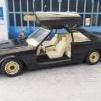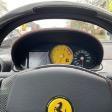-
Willkommen bei Carpassion.com
Europas großem Sportwagen-Forum.
Aktuell können Sie als Gast bereits gewisse Beiträge und Inhalte sehen.
Möchten Sie jedoch Zugang zu weiteren exklusiven Inhalten oder sich mit anderen Sportwagen-Fahrern austauschen, können Sie sich völlig kostenlos und unverbindlich bei uns neu anmelden.
-
Marktplatz
-
Vieldiskutiert
-






Empfohlene Beiträge
Archiviert
Dieses Thema ist archiviert und für weitere Antworten gesperrt. Erstelle doch dein eigenes Thema im passenden Forum.